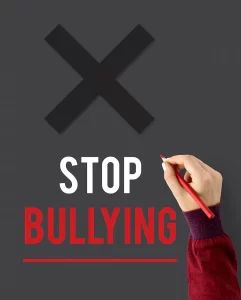Bullying is an intentional act of aggression, based on an imbalance of power that is meant to harm a victim either physically or psychologically. Bullies usually operate alone or in small groups and choose to victimize individuals who they perceive as vulnerable. Bullies may target their victims because of their small stature, their younger age, or lower social status. The intent of the bully is to satisfy his/her own personal needs, such as obtaining money, homework, or simply using intimidation to prove one’s status.
Bullying is a widespread and serious problem that can happen anywhere. It is not a phase children have to go through, it is not “just messing around,” and it is not something to grow out of. Bullying can cause serious and lasting harm.
Visit the National Bullying Prevention Center for more information.
Although definitions of bullying vary, most agree that bullying involves:
- Imbalance of Power: people who bully use their power to control or harm and the victims may have a hard time defending themselves
- Intent to Cause Harm: accidental actions are not bullying; the person bullying has a goal to cause harm
- Repetition: incidents of bullying happen to the same person over and over by the same person or group
Statistics
- About 42 % of kids have been bullied while online with one in four being verbally attacked more than once.
- About 35 % of kids have been threatened online.
- About 58 % of kids and teens have reported that something mean has been said about them or to them online.
- Other bullying statistics show that about 77 % of students have admitted to being the victim of one type of bullying or another.
- The American Justice Department bullying statistics show that one out of every 4 kids will be bullied sometime throughout their adolescence.
- 46 % of males followed by 26 % of females have admitted to being victims in physical fights as reported in one report of bullying statistics by the Bureau of Justice School.
Other bullying facts
- As these bullying statistics indicate, bullying is getting worse in American schools. Many studies have shown that increasing domestic violence at home is leading to an increase in bullying online and
- Researchers also note that one way to help begin to lower these bullying statistics is to tell an adult when it is happening.
- According to the i-Safe American survey of students bullying statistics, about 58 % of kids admit to never telling an adult when they’ve been the victim of a bullying attack.
- Another way to stay safe from bullies is to inform the school if the attacks are taking place on school property or have something to do with the school.
- Ignore messages sent by cyber bullies.
Click here for additional information from the Natalee Holloway Resource Center.
Sources:
http://www.isafe.org
Back to Crime Library
|
|
|

